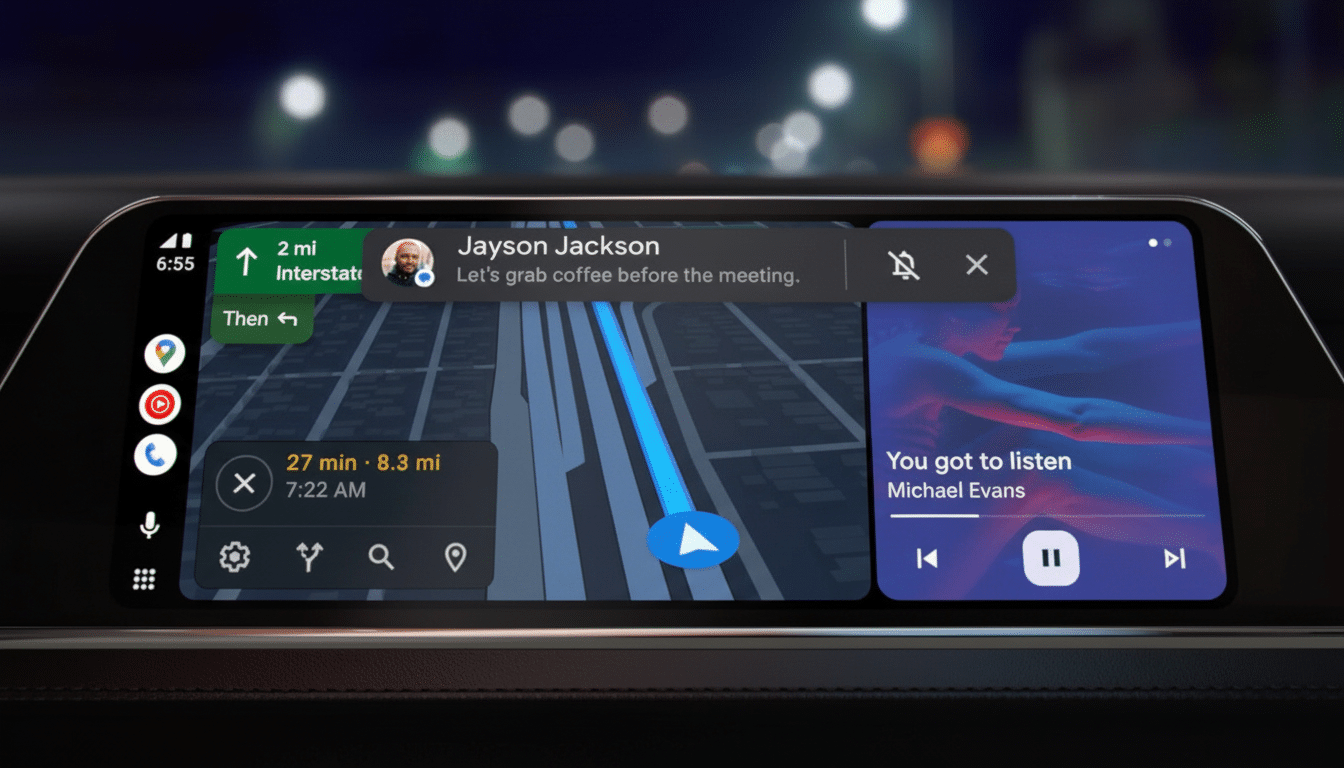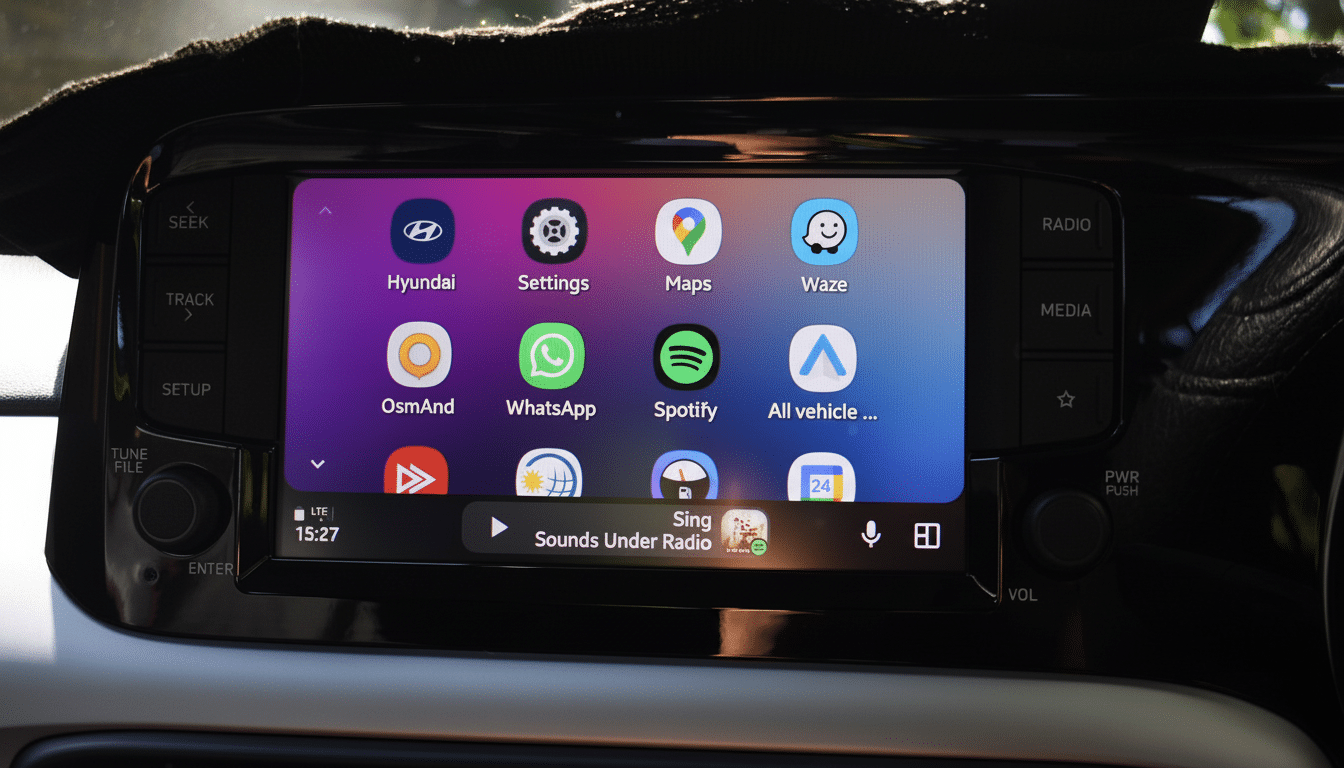Android Auto has become a daily companion for millions of drivers, but its rough edges are starting to show. Despite steady updates, core usability gaps and inconsistent behavior are undermining confidence in Google’s in-car experience. Based on owner feedback, usability research, and industry benchmarks, six issues stand out as the ones Google needs to fix first. These are not fringe irritations; they touch safety, accessibility, and the basics of getting from A to B without fuss.
Organizations like J.D. Power have repeatedly found that voice recognition and infotainment complexity rank among the most common owner complaints, while safety groups including NHTSA and the AAA Foundation warn that clumsy in-car interactions increase distraction risk. Android Auto can and should set the standard here.

Navigation voice volume that you can always control
Right now, adjusting the guidance voice or alert volume is only straightforward while a mapping app is actively speaking. If you accidentally mute it or set it too low, restoring a sensible level mid-drive can be maddening. That turns a basic task into a multi-step hunt through menus—exactly the sort of friction driver-interface guidelines discourage. The fix is simple: a persistent, context-aware volume control for navigation that’s accessible at all times, plus a quick “restore to default” toggle. A small, glanceable slider within the map card and a short sample prompt would let drivers or passengers set levels safely without waiting for the next instruction to play.
Deep-link app drawer shortcuts for one-tap actions
Android Auto’s launcher still behaves like a list of apps, not a list of actions. In the car, drivers want one-tap access to the thing they intend to do—start a favorite playlist, open a saved route, call a specific contact, or jump straight to a fuel loyalty app’s nearest station screen—without digging through layers. Google should allow deep-link shortcuts pinned to the app drawer: a specific Spotify playlist, a Google Maps saved place, a WhatsApp contact with “send voice reply,” or a charging network’s nearest fast charger. Assistant routines can approximate this, but voice remains unreliable. Deterministic, tap-first shortcuts would cut seconds and reduce cognitive load.
A stable UI you can tune to your in-car needs
Voice control that understands real drivers
Voice is supposed to be the safest input, yet it often falters at the basics. It mishears destinations, mangles message replies, or times out. Owner studies consistently rate voice recognition as one of the most problematic new vehicle features; that has been entirely true of the Android Auto experience across accents and noisy cabins. Google needs a strong, low-latency assistant with on-device speech matching, better accent recognition, and unambiguous affirmations. Everything hinted at for the dashboard in next-generation models—vital inferences, natural back-and-forth, and more intelligent fixes—must be there in a manner that can be relied upon. Offline intent matching for common controls such as navigation, calls, and media will maintain performance if coverage is unexpectedly lost.
A passenger mode that enables safe assistance
More locked tasks can be shared with passengers. Android Auto turns off certain gestures while the car is in motion to minimize interference, such as typing a location. Although this seems logical, it is exasperating when a passenger attempts to assist. Many drivers, frustrated by fumbling voices, wind up quitting to perform something they could easily and safely have given to a passenger in a second.

This may easily be solved with a service-specific variation of the APK. It could be a passive unlock: a specific passenger button on startup or a PIN code query that allows the passenger to look for a place, choose a call number, browse a playlist, etc. Automatic relock after, say, a moment deters anyone from using it unless necessary. If automakers want to put in this extra effort, they could limit it to a vehicle’s seat occupancy and proximity to the passenger’s Bluetooth-equipped smartphone, a security principle commonly promoted by rules.
Car-friendly widgets that surface key info at a glance
Android Auto’s multi-panel format leaves precious space underused. Competitors have demonstrated that car-friendly widgets can provide information without diving into apps: upcoming calendar events, live lyrics, weather at your destination, speed restrictions, and time until the next battery stop. If done well, widgets can reduce interaction by presenting answers ambiently. Google should establish a group of curated Auto-safe widgets—drafted by Google and vetted partners—showing traffic incidents ahead, time until the next turn, day and night length, fuel pricing trends on your path, or a ticker showing how long it will take to reach your destination. With strict rules for type, contrast, and tapping, widgets aid situational focus and spaced monitoring.
Android Auto has developed into a vital co-pilot, but these six adjustments will raise it from successful to assured.
- Stable navigation volume controls
- Action-first deep-link shortcuts
- A tweakable, stable user interface
- Reliable voice control
- A true passenger mode
- At-a-glance, Auto-safe widgets
A calmer cabin, local trips, and an in-car experience that actually looks as intelligent as the phone that feeds it.

